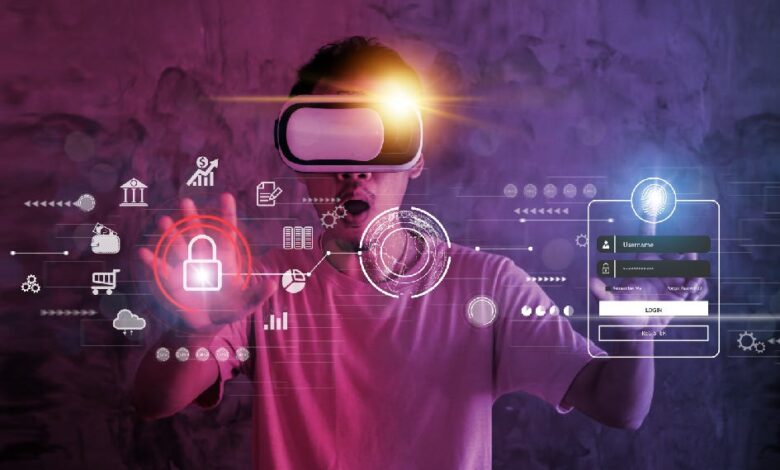Tech Trends GFXProjectality

Tech Trends GFXProjectality: A New Era of Visual Innovation
Introduction
In today’s rapidly evolving digital landscape, the phrase Tech Trends GFXProjectality is gaining momentum. This term captures a compelling fusion of graphics (GFX), project-based digital experiences, and immersive realities (Projectality) that span industries from gaming and design to education and enterprise. In this article, we will explore what Tech Trends GFXProjectality means, why it matters, and how it’s shaping the future.
What is Tech Trends GFXProjectality?
At its core, Tech Trends GFXProjectality refers to the convergence of high-fidelity graphics, project workflows, and immersive technologies (e.g., AR/VR/XR), underpinned by modern computational tools like AI, cloud and real-time rendering. (Fox4KC)
Breaking it down:
- “GFX” stands for graphics — the engine behind visual representation, rendering, simulation.
- “Projectality” implies project-based execution of immersive experiences and realities — moving beyond static visuals to interactive, applied, real-world-bound systems.
Thus, Tech Trends GFXProjectality signals the shift from purely visual media toward integrated, immersive environments where graphics and project delivery merge.
Key Drivers Behind Tech Trends GFXProjectality
1. Artificial Intelligence & Generative Tools
AI is playing an increasingly central role in the development of GFX-heavy workflows: generating visual assets, automating rendering tasks, and adapting visuals in real time based on user behaviour. (dbgconway)
For example, algorithms now assist in asset generation and optimization, freeing creators from repetitive manual tasks.
2. Real-Time Rendering & Immersive Environments
With hardware and software advancements, real-time rendering — where visuals update instantly rather than being pre-computed over hours — is becoming accessible. This enables true immersion in AR/VR/XR scenarios, one of the core components of Tech Trends GFXProjectality. (My Magazine)
3. Extended Reality (XR), Digital Twins & Interactive Spaces
Tech Trends GFXProjectality thrives in scenarios where virtual and real world blur. XR (VR + AR), simulation tools, and digital twins (virtual replicas of physical systems) are key use-cases. (tmkiki.com)
4. Cloud, Edge, and Collaborative Pipelines
A major driver is the shift to cloud/edge computing and remote collaborative design pipelines. Because producing high-fidelity immersive graphics requires heavy processing, distributed architectures enable teams to build and deliver Tech Trends GFXProjectality experiences more efficiently. (Fox4KC)
Where Tech Trends GFXProjectality is Being Applied
Gaming & Entertainment
In gaming and VFX, Tech Trends GFXProjectality powers ultra-realistic rendering, immersive narrative worlds, and new interaction models. For instance, games and film productions can leverage real-time graphics, realistic physics, and AI-driven environments. (My Magazine)
Architecture, Design & Construction
Architects and designers use immersive visualisation tools developed under the Tech Trends GFXProjectality umbrella — clients can intuitively walk through digital models of buildings, experience lighting and space before construction begins. (tmkiki.com)
Enterprise & Training
Businesses are adopting immersive workspaces, digital twins, and interactive training modules (for e.g., healthcare, safety, machinery) made possible by Tech Trends GFXProjectality. These allow safe simulation of real-world tasks and better collaboration across geographies. (smartaireview.com)
E-Commerce & Customer Experience
The retail and e-commerce sectors are also tapping into Tech Trends GFXProjectality: 3D product previews, AR try-ons, digital showrooms — all part of making experiences more engaging and immersive. (tmkiki.com)
Why Tech Trends GFXProjectality Matters Now
- User expectations are rising: People expect richer visuals, more interactivity, and immersive experiences — not just static displays.
- Competitive advantage: Businesses and creators who harness Tech Trends GFXProjectality can stand out with more engaging, efficient workflows and better end-user experiences.
- Technological readiness: The ingredients — GPU power, cloud infrastructure, AI, XR hardware — are increasingly available and cost-effective, making the trend viable rather than niche.
- Cross-industry impact: Unlike trends confined to gaming or entertainment, Tech Trends GFXProjectality spans industries and serves multiple use-cases.
Challenges & Considerations
Of course, there are hurdles to broad adoption of Tech Trends GFXProjectality:
- Hardware & cost: High-fidelity graphics and immersive environments often demand powerful GPUs, sensors, specialised hardware — which may be costly.
- Skill gap: Creators need to master new tools and pipelines (e.g., real-time engines, XR design, AI workflows) which may require training.
- Workflow complexity: Integrating graphics, real-time rendering, user-data, collaboration infrastructure is non-trivial.
- Ethics & privacy: Immersive experiences collect more user-data and can potentially blur lines between real and virtual. Responsible design is essential.
- Standards & interoperability: With many platforms and engines, ensuring compatibility across devices and ecosystems remains a challenge.
Looking Ahead: What’s Next for Tech Trends GFXProjectality
- Greater realism & physics: Expect visual fidelity and simulation accuracy to keep improving so that digital environments feel nearly indistinguishable from physical ones.
- Seamless device-agnostic immersion: Experiences will increasingly work across mobile, desktop, VR/AR hardware, making Tech Trends GFXProjectality accessible.
- AI-driven experiences: From dynamic environments to personalised visuals, AI will deepen immersion and responsiveness.
- **Hybrid physical-digital **: The future will bring blended realities where physical and virtual spaces merge — Tech Trends GFXProjectality will be central.
- Broader industry adoption: Beyond entertainment, more sectors (education, healthcare, manufacturing, logistics) will adopt these immersive graphics-driven systems.
Conclusion
Tech Trends GFXProjectality is not just a buzzword—it encapsulates a meaningful shift in how we think about visual computing, immersive experiences, and applied graphics. Whether you’re a designer, developer, business strategist or educator, understanding how Tech Trends GFXProjectality is shaping technology today gives you a lens into where future innovation lies. By aligning with these trends — embracing real-time graphics, immersive pipelines, AI-assisted workflows — one can stay ahead in the evolving digital frontier.
🧠 Frequently Asked Questions (FAQ) About Tech Trends GFXProjectality
1. What does Tech Trends GFXProjectality mean?
Tech Trends GFXProjectality refers to the latest movement in technology where high-quality graphics (GFX), immersive realities (like AR/VR), and project-based workflows combine to create interactive and visually rich digital experiences. It’s about blending design, technology, and innovation into one creative ecosystem.
2. Why is Tech Trends GFXProjectality important in 2025?
In 2025, visual content dominates digital interaction — from gaming and entertainment to education and virtual workspaces. Tech Trends GFXProjectality is vital because it helps industries create more realistic, engaging, and efficient experiences using AI, real-time rendering, and cloud-based tools.
3. Which industries are using Tech Trends GFXProjectality?
Many industries are already adopting Tech Trends GFXProjectality, including:
- 🎮 Gaming & Entertainment – for real-time, immersive worlds.
- 🏗️ Architecture & Design – for 3D visualization and walkthroughs.
- 🏢 Business & Training – for digital twins and virtual learning environments.
- 🛍️ E-commerce – for 3D product previews and AR shopping experiences.
4. How does AI fit into Tech Trends GFXProjectality?
Artificial Intelligence (AI) is the engine behind many innovations in Tech Trends GFXProjectality. AI automates asset creation, optimizes visuals, and personalizes user experiences. For example, AI tools can design backgrounds, adjust lighting, or even generate entire environments in real-time.
5. What are the main benefits of Tech Trends GFXProjectality?
Some key advantages include:
- Enhanced creativity and faster design workflows.
- More realistic and immersive visuals.
- Easier collaboration through cloud-based tools.
- Improved learning and training outcomes using interactive environments.
- Stronger customer engagement through 3D and AR experiences.
6. What challenges come with adopting Tech Trends GFXProjectality?
Despite its benefits, Tech Trends GFXProjectality faces challenges such as:
- High hardware and software costs.
- The need for skilled developers and designers.
- Privacy and data concerns in immersive environments.
- Compatibility issues between platforms and devices.
7. How can businesses start using Tech Trends GFXProjectality?
Businesses can begin by:
- Identifying areas where immersive visuals or AI can improve their workflow.
- Using affordable real-time 3D tools (like Unreal Engine, Unity, or Blender).
- Collaborating with design and tech experts familiar with GFX and AR/VR.
- Starting small — like an AR product preview or a virtual office experience.
8. What is the future of Tech Trends GFXProjectality?
The future of Tech Trends GFXProjectality looks bright and fast-moving. We can expect more AI-driven automation, hyper-realistic simulations, and seamless integration between physical and virtual worlds. It’s a trend that will redefine how we work, learn, and experience technology.
9. Is Tech Trends GFXProjectality just for tech professionals?
Not at all. While it began with developers and designers, Tech Trends GFXProjectality is expanding into education, marketing, healthcare, and even retail. Anyone who wants to create engaging digital experiences can benefit from understanding this trend.
10. How does Tech Trends GFXProjectality affect everyday users?
For everyday users, Tech Trends GFXProjectality means more engaging games, realistic shopping experiences, better training tools, and richer digital interactions. In short, it makes technology feel more natural and human-centered.




